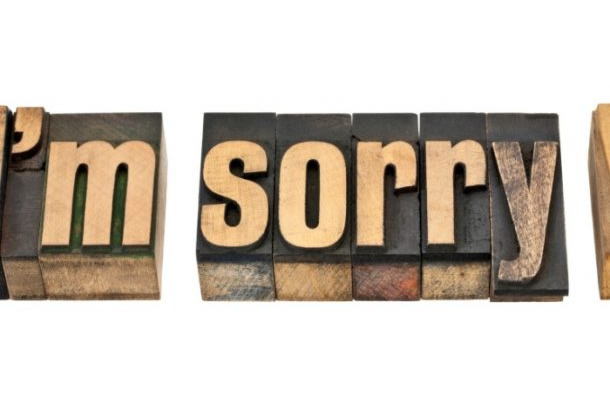
Last February we wrote about the launch of “Apology Watch,” noting that the new Dealbook column would “monitor and report on the actions of CEOs and other public leaders after they have publicly apologized for…[fill in the blank].” That blank was filled in countless times over the course of the year. By looking back at some of 2014’s most high-profile apologies, we can learn quite a bit about what does and doesn’t work.
Be prepared and transparent When the Guardian reported in October that anonymous messaging startup Whisper was tracking users without their knowledge, the company’s disorganized response only made the situation worse. “Whisper’s responses have seemed scattershot and poorly considered” and “leave the impression that the company is attempting to cover its tracks without in any way effectively addressing the core issue–their breach of their users’ trust,” we explained in the Wall Street Journal’s Crisis of the Week column. “Management should have started with a simple statement that they are reviewing their terms of service, avoiding additional controversy.”
Listen to critics and take action One of Dealbook’s first “Apology Watch” columns, which we wrote about in March, focused on AOL CEO Tim Armstrong’s apology for an insensitive comment linking employees’ “distressed babies” to a cut in the company’s 401(k) benefits. While acknowledging that the CEO’s apology wasn’t perfect, author and corporate consultant Dov Seidman praised how Armstrong listened intently to those that he offended and acted on his apology by reversing the 401(k) cuts. “With these two actions, Mr. Armstrong took important steps toward restoring faith in personal and corporate character,” Seidman wrote for Dealbook.
Show that you are sincere After their embarrassing and inappropriate emails about President Obama were leaked in December, Sony co-chairwoman Amy Pascal and film producer Scott Rudin both issued well-considered and heartfelt apologies. While the Sony Hack has grown into a larger and more complex crisis, Pascal and Rudin understood the gravity of their leaked exchanges and responded by taking responsibility for them.
Social media and Crisis Communication 2.0 The series of rash tweets by Whisper’s editor in chief demonstrates some of the dangers of social media. But we can look to General Motors to see how social media can be a powerful tool for apologizing and rebuilding trust. In the wake of recalling millions of cars in early 2014, the automaker employed a number of strategies to help manage the fallout. As we described in March, GM customer service staff monitor and respond quickly to comments and complaints on Facebook, Twitter and online auto forums. The company also shared a video in which CEO Mary Barra directly addressed the recall. This 2.0 crisis communications strategy, which we examined more closely in a Forbes.com article, helped set the stage for what Bloomberg Businessweek called an “unusually bold” and “full-throated apology” by Barra in June.
Be quick and measured Best Buy’s ill-considered tweet making light of the murder case featured in the popular podcast Serial could have caused more damage to the retailer, but this quick and concise response helped prevent that:
We deeply apologize for our earlier tweet about Serial. It lacked good judgment and doesn’t reflect the values of our company. We are sorry. — Best Buy (@BestBuy) December 11, 2014
This tweet-sized apology was sincere and appropriate in scale—for a tweet-sized misstep. With it, the company nipped a potential crisis in the bud. Stay tuned, as there will surely be more apologies to examine and learn from.


